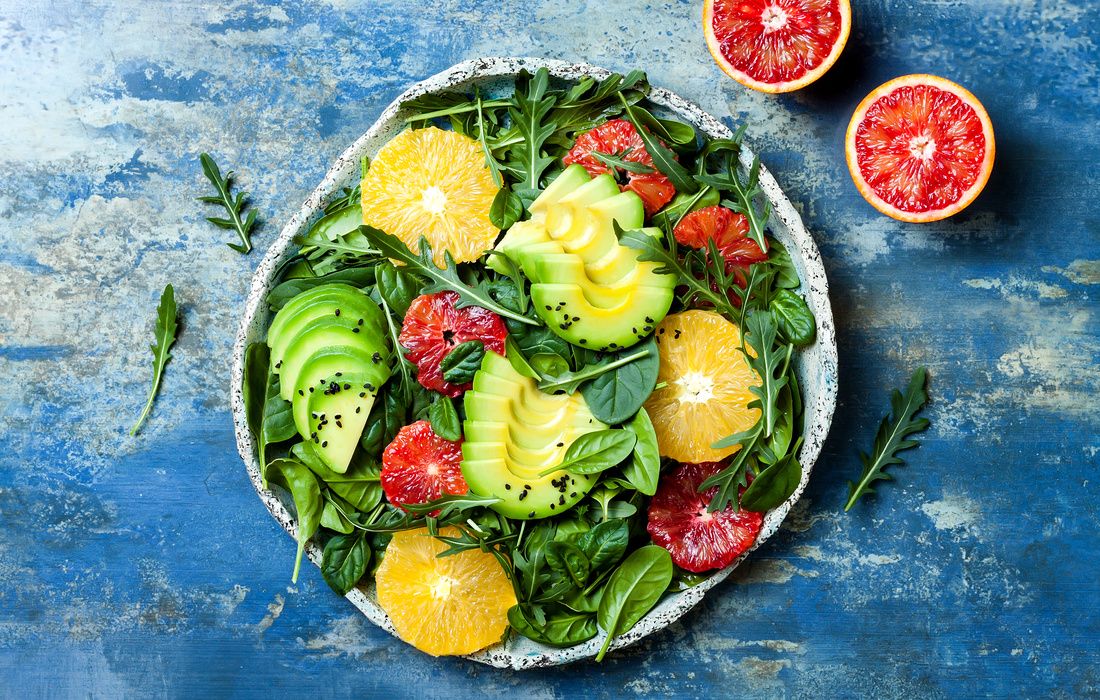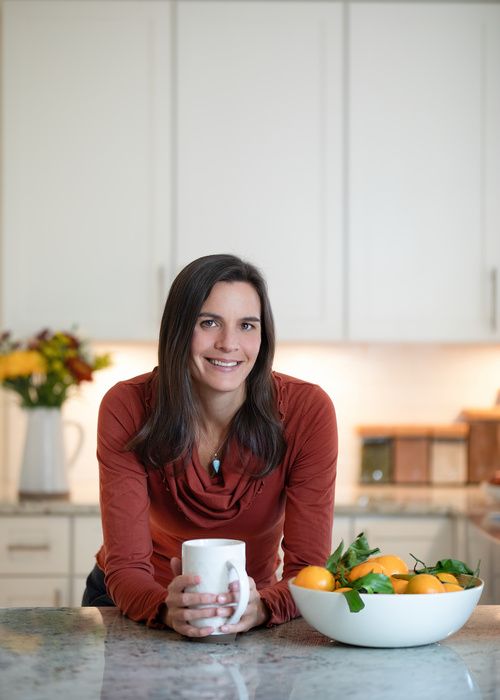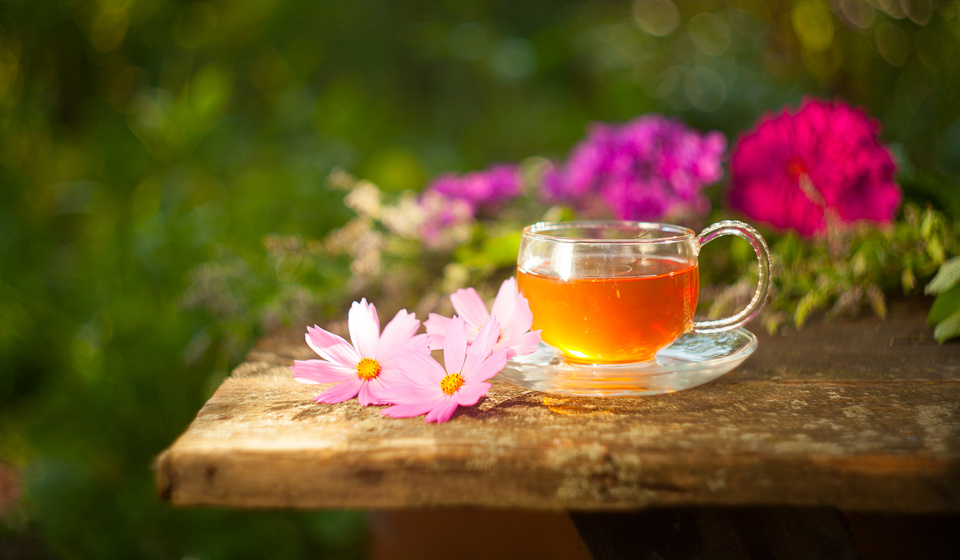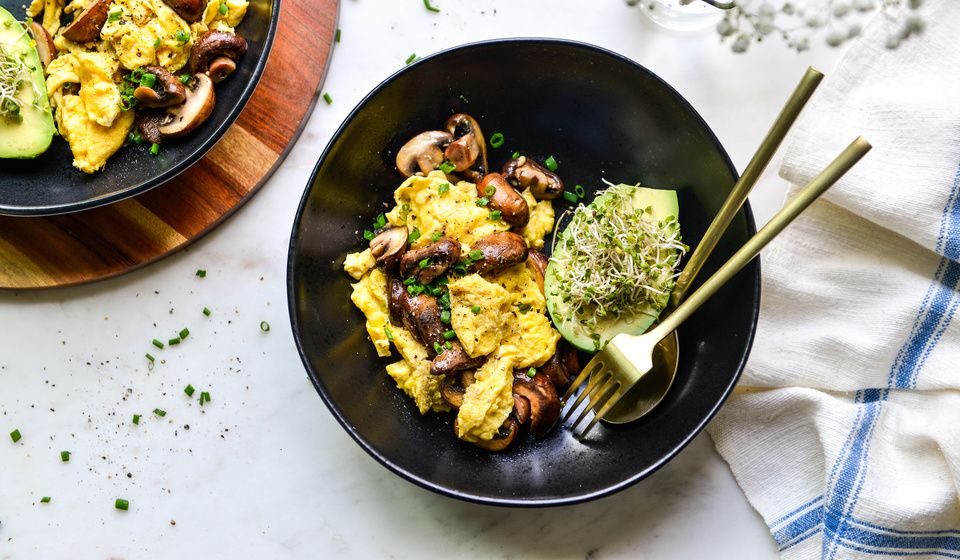How To Do a Detoxification Diet and Why
Ali Segersten May 07, 2025 1 comment
Every single day, your body is working quietly and powerfully to protect you. With every breath you take, every bite of food, every sip of water, your cells are assessing, sorting, and transforming what’s needed—and what must be let go. This is detoxification: your body’s innate ability to process, neutralize, and eliminate harmful substances.
But in today’s world, that natural process can become overwhelmed. The air we breathe, the foods we eat, the products we put on our skin—all contribute to a growing toxic burden. A Detoxification Diet offers a way to reduce that load while nourishing your body with the nutrients it needs to restore balance and resilience.
What Is a Detoxification Diet?
A detoxification diet, or detox diet, is a therapeutic way of eating that reduces exposure to harmful substances while enhancing your body’s built-in detox systems—primarily your liver, digestive tract, kidneys, lymph, and skin. It focuses on whole, nutrient-dense foods that fuel cellular repair, regulate inflammation, and improve elimination.
This diet removes common inflammatory foods like refined sugar, gluten, dairy, processed oils, and chemically laden packaged goods. In their place, it introduces an abundance of healing ingredients: cruciferous vegetables, fiber-rich plants, clean proteins, bitter greens, polyphenol-rich fruits, and herbs that support liver function.
This isn’t a quick cleanse or deprivation-based detox. It’s a structured, science-informed plan that works with your body to promote lasting transformation.
How Detoxification Works: Your Body’s 3-Phase Process
Detoxification isn’t about flushing out toxins with extreme diets—it’s about supporting your body’s natural biotransformation process. This process unfolds in three interconnected phases:
Phase I: Activation
In the liver, enzymes from the cytochrome P450 family begin breaking down toxins—everything from pesticides and plastics to alcohol, medications, and excess hormones—by adding a reactive group to their chemical structure. These initial reactions produce intermediate metabolites, which are often more reactive (and potentially more harmful) than the original toxins.
Phase II: Conjugation and Neutralization
This is where the magic happens. Your body uses specific nutrients—amino acids, sulfur compounds, methyl donors, and antioxidants—to neutralize those reactive intermediates. Through conjugation pathways like glucuronidation, sulfation, glutathione conjugation, and methylation, toxins are rendered water-soluble and safe to excrete. Without adequate nutrient intake, these conjugation reactions can’t keep pace with Phase I activation—leading to a buildup of reactive intermediates.
Phase III: Elimination
Toxins are carried out of the body through stool, urine, and sweat. Daily elimination is critical—without it, toxins can recirculate, leading to inflammation and metabolic sluggishness.
The Nutrients That Power Detox Pathways
Your detoxification system is fueled by real food—whole, nutrient-dense ingredients that provide the raw materials for each phase of detox. Without them, your liver can't complete the task of safely transforming and eliminating toxins. Here’s how specific nutrients support detoxification and where you can find them in your meals:
Sulfur Compounds
What they do: Provide building blocks for glutathione production—your body’s master antioxidant—and support sulfation and glutathione conjugation pathways. These processes are essential for neutralizing heavy metals, environmental chemicals, excess hormones (including cortisol), and other Phase I by-products.
Sources: Garlic, onions, leeks, broccoli, cabbage, brussels sprouts, kale, eggs, wild salmon, pasture-raised poultry, and N-acetyl cysteine (NAC).
Why they matter: Sulfur compounds not only drive detoxification—they also help protect the liver itself from oxidative damage.
Sulforaphane
What it does: Sulforaphane, a compound found in cruciferous vegetables (especially broccoli sprouts), is one of the most potent activators of the Nrf2 pathway—a genetic switch that turns on dozens of detoxification and antioxidant enzymes involved in Phase II. It also supports glutathione recycling and cellular protection.
Sources: Broccoli sprouts, cabbage, kale, mustard greens, kohlrabi, cauliflower, radishes, arugula
Why it matters: Sulforaphane helps the body defend against oxidative stress, protect DNA, and maintain liver resilience in the face of environmental exposures.
Fiber
What it does: Fiber binds to toxins, estrogens, bile acids, and endotoxins in the gut, preventing reabsorption and ensuring proper elimination. It also supports gut microbiome diversity and regular bowel movements, both essential for Phase III detox.
Sources: Flaxseeds, chia seeds, apples, legumes, leafy greens, gluten-free oats, brown rice, beets, carrots.
Why it matters: A sluggish bowel can cause toxins to be reabsorbed into circulation—a process called enterohepatic recirculation—undoing the work your liver has already done.
Polyphenols
What they do: Provide antioxidant protection, reduce oxidative stress, and activate Nrf2, the genetic switch for antioxidant and detox enzymes.
Sources: Berries, green tea, matcha, turmeric, pomegranate, beets, purple carrots, red cabbage, dark chocolate, black rice, extra virgin olive oil.
Why they matter: Polyphenols reduce the oxidative damage caused by detox itself. Polyphenols also support a healthy gut microbiome, which plays a vital role in immune regulation and the ability to safely excrete toxins.
Amino Acids
What they do: Provide the molecular “tags” needed for amino acid conjugation, glutathione synthesis, methylation, and bile production. Each of these is a critical Phase II pathway for neutralizing different classes of toxins.
Key amino acids: Glycine, taurine, glutamine, cysteine, and methionine
Sources: Bone broth, lentils, hemp seeds, wild-caught fish, pasture-raised poultry, grass-fed meats, and clean protein powders
Why they matter: Without adequate amino acids, Phase II cannot function, and reactive intermediates from Phase I may build up and cause inflammation or fatigue.
Methylation Support
What it does: Methylation helps detoxify environmental toxins, histamine, and excess hormones—especially estrogens. It’s one of the most nutrient-dependent detox pathways and is also essential for neurotransmitter balance and DNA repair.
Sources: Beets, leafy greens, pasture-raised eggs, wild-caught shrimp, lamb, beef, lentils, and sunflower seeds
Key nutrients: Folate, vitamin B6, B12, magnesium, and betaine
Why it matters: Methylation is often impaired in people with genetic SNPs, stress, or poor diet—and supporting it nutritionally can improve energy, mood, and resilience.
Magnesium
What it does: Acts as a cofactor in hundreds of enzymatic reactions, including methylation, sulfation, and glutathione recycling. It also calms the nervous system, supports sleep, and reduces muscle tension—important during any healing process.
Sources: Pumpkin seeds, leafy greens, cashews, avocado, black beans, wild salmon, and cacao. As well as supplements in the chelated form such as magnesium glycinate and malate.
Why it matters: Magnesium is commonly depleted by stress, sugar, and medications. Certain environmental chemicals also block magnesium absorption in the gut and increase its excretion through the kidneys. Without enough magnesium, detoxification pathways cannot do their job.
Without enough of these detox-supportive nutrients, your liver's efforts stall—and toxins may remain circulating in the body, contributing to fatigue, inflammation, hormonal imbalances, and brain fog. A therapeutic detox diet emphasizes these nutrients at every meal to nourish your body, calm inflammation, and promote healing from the inside out.
Summary: Nutrients That Support Specific Phase II Detox Pathways
Here's a breakdown of what your body needs to keep each pathway running efficiently:
Glucuronidation:
- Cruciferous vegetables, citrus, soy, dandelion greens, rosemary, rooibos tea, ellagic acid (from berries, pomegranate, walnuts), curcumin, and ferulic acid (from flax seeds and whole grains).
- D-glucaric acid, a key compound, is found in apples, broccoli, spinach, and oranges.
Sulfation:
- Sulfur-rich foods like garlic, onions, leeks, cruciferous vegetables, and high-quality proteins (poultry, wild fish, eggs).
Glutathione Conjugation:
- High-quality protein sources rich in cysteine, glycine, and glutamic acid; also supported by NAC, selenium, magnesium, folate, vitamin B6, and alpha-lipoic acid.
- Also activated by cruciferous vegetables (broccoli, kale, radishes, arugula), which upregulates glutathione S-transferase (GST) at the genetic level.
Methylation:
- Methionine, folate, vitamin B6, B12, betaine (from beets and shrimp), and magnesium.
Amino Acid Conjugation:
- Glycine, taurine, glutamine—found in bone broth, legumes, and clean proteins.
What Does a Detoxification Diet Look Like in Real Life?
Detox-friendly meals are colorful, plant-forward, contain sources of high-quality protein, and deeply satisfying. Think:
- A morning smoothie with frozen wild blueberries, avocado, citrus, chia, red cabbage, and an amino acid powder (try this red antioxidant smoothie recipe)
- A lunch salad with arugula, roasted beets, pumpkin seeds, salmon, and lemon-tahini dressing
- A warming dinner bowl with quinoa, garlic-sautéed greens, turmeric chicken, and broccoli sprouts
Every meal is an opportunity to nourish your detox pathways while grounding you in vitality.
Create a Lighter Load: Everyday Ways to Reduce Toxic Exposure
Supporting your detox pathways isn’t just about what you add in—it’s also about what you reduce. Without rigidity or perfection, there are simple ways to lighten your daily toxic load and ease the burden on your body.
You might start by choosing organic meats, dairy, and produce when you can, especially foods that tend to carry higher pesticide residues. Pesticides and other chemicals often concentrate in fat, so reaching for leaner cuts of animal protein and pastured, organically raised sources can make a difference.
For produce, a few mindful prep practices go a long way. Washing fruits and vegetables before cutting, peeling, or slicing helps prevent pesticides or contaminants on the surface from transferring inside. If you're looking for guidance, I love the Environmental Working Group’s Dirty Dozen and Clean Fifteen lists—they’re updated annually and provide an easy way to know which produce is worth buying organic and which are lower risk.
You might also begin to transition away from processed foods with preservatives, artificial sweeteners, and food dyes—common disruptors that sneak into so many packaged items. Cooking at home with real, whole ingredients is a powerful way to shift this without overwhelm.
And finally, consider how your food is stored and prepared. Swapping out plastic containers or canned foods for glass jars and BPA-free options can reduce chemical exposure over time. Cookware matters too—stainless steel, cast iron, glass, and ceramic are great alternatives to non-stick surfaces that can leach toxins when heated. Use this guide for buying safe cookware.
You don’t need to overhaul your life overnight. Every small shift makes space for your body to do what it’s designed to do: detoxify, repair, and restore balance—gently, over time.
When to Consider a Detoxification Diet
This plan is especially helpful if you’re experiencing:
- Fatigue, brain fog, or sleep disturbances
- Hormonal imbalance or menstrual irregularities
- Chronically elevated cortisol
- Acne, rashes, or sluggish digestion
- Estrogen dominance or PMS
- A history of alcohol overuse or elevated liver enzymes
- Suspected toxic exposures (mold, pesticides, heavy metals)
Even if you’re simply feeling heavy or off-balance, a detoxification diet offers a gentle but powerful reset.
A Functional Approach: Nourish, Don’t Push
A therapeutic detox diet isn’t about forcing the body to “clean house”—it’s about partnering with your biology. When we support each phase of detoxification with the nutrients, hydration, and lifestyle practices it needs, the body responds with clarity, energy, and resilience.
This whole-body, functional approach restores not just the liver, but the entire detox network—including the gut, kidneys, lymph, and skin.

Getting Started: Your Path to Wholeness
Begin with consistency, not perfection. Start by removing the top burdens: processed foods, refined sugar, gluten, alcohol, and inflammatory oils. At the same time, increase your intake of detox-supportive foods. Drink plenty of purified water. Support elimination with fiber, movement, and rest.
You might experience cravings or fatigue in the first few days—this is your body recalibrating. Stick with it. Within 1 to 2 weeks, many people report clearer thinking, brighter skin, deeper sleep, and renewed vitality.
Your Next Step: A Guided Detox Meal Plan
Our Detoxification Diet and IFM Detox Food Plan inside the Nourishing Meals® Membership offer everything you need to begin:
- Nutrient-dense, anti-inflammatory recipes
- Weekly meal plans with built-in detox support
- Shopping lists, prep tips, and guidance to stay on track
🌿 Ready to reset your body and reclaim your energy?
Take a short tour of the membership here.

About the Author
Alissa Segersten, MS, CN
Alissa Segersten, MS, CN, is the founder of Nourishing Meals®, an online meal-planning membership with over 1,800 nourishing recipes and tools to support dietary change and better health. As a functional nutritionist, professional recipe developer, and author of The Whole Life Nutrition Cookbook, Nourishing Meals, and co-author of The Elimination Diet, she helps people overcome health challenges through food. A mother of five, Alissa understands the importance of creating nutrient-dense meals for the whole family. Rooted in science and deep nourishment, her work makes healthy eating accessible, empowering thousands to transform their well-being through food.Nourishing Meals Newsletter
Email updates.






Add Comment
Comments
Would this type of diet be…
Would this type of diet be appropriate for a person going through chemotherapy?